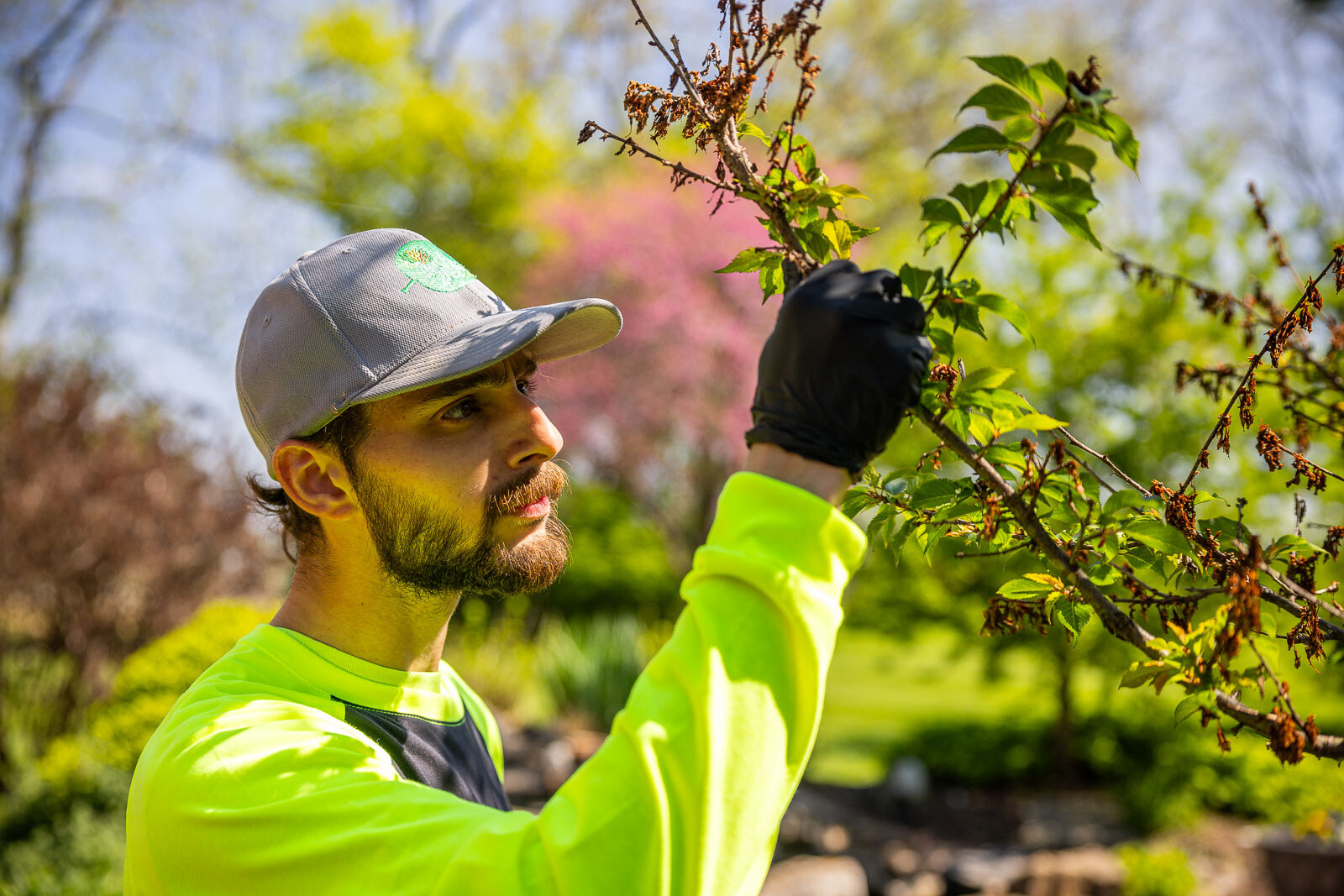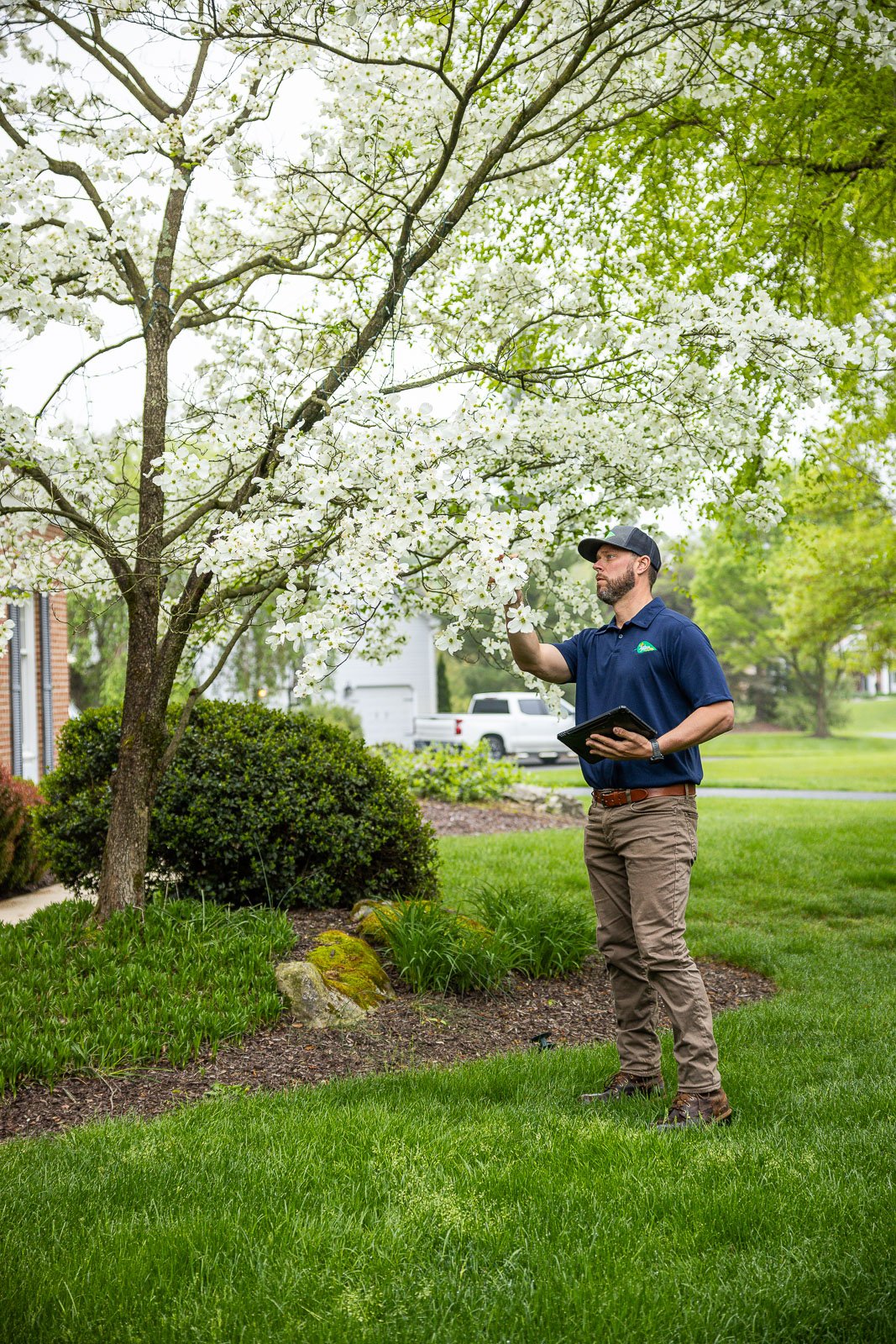How to Become an Arborist and Grow a Thriving Green Career
Working with trees isn’t just a job, it’s a calling. If you love being outdoors, aren’t afraid to get your hands dirty, and want to build a career that makes an impact, becoming an arborist may be the path for you. But before you climb your first tree, you need to know what it takes to get there.
In this guide, we’ll walk you through how to become an arborist, step by step. From arborist education requirements to the certification process, hands-on training, and long-term career growth, we’re breaking it all down, so you can confidently get started.
At Joshua Tree Experts, we’ve been helping trees (and future arborists) thrive for nearly 20 years. Our tree care services cover everything from pruning and removal to lawn care. Reach out to us today and make your trees the envy of the neighborhood.
Understanding the Role of an Arborist
As tree care professionals, arborists specialize in the health, safety, and maintenance of trees. Whether trimming branches, diagnosing diseases, or removing hazardous limbs, their job is to help trees thrive in every season, keeping people and property safe in the process.
Arborist duties may include:
- Pruning and trimming trees to encourage healthy growth
- Diagnosing and treating tree pests or diseases
- Safely removing dead or dangerous trees
- Assessing soil conditions and recommending care
- Climbing trees or operating lift equipment to perform canopy work
Arborists work in parks, neighborhoods, commercial properties, and anywhere trees grow. It’s a hands-on career that blends science, physical skill, and a deep respect for nature.
Steps to Becoming a Certified Arborist in the United States
If you're serious about becoming an arborist, these steps can help you meet arborist education requirements and set yourself up for a long-term career in the field. From your first job to your ISA certification, here’s what you need to know:
1. Get A High School Diploma or GED
The first step in becoming an arborist is completing your high school education or earning a GED. This shows you have the foundational skills—like basic math, biology, and communication—needed to understand tree science and safety procedures.
2. Get A State License (If Applicable)
Some states (like California, Connecticut, and Maryland) require arborists to be licensed before doing tree work. Not every state requires this, but it’s helpful to check your local regulations.
3. On-The Job Training
This is where most arborists really learn the trade. You’ll likely start out trimming, dragging brush, or spotting climbers. Over time, you’ll gain experience with:
- Tree climbing and rigging
- Safe pruning and removal practices
- Operating chainsaws and chippers
- Diagnosing tree health issues
- Equipment maintenance and safety
You don’t need to know everything on day one; this step is about building real-world skills through hands-on work.
4. Understanding Basic Health & Safety Measures
Tree care can be risky. From chainsaws to climbing gear to falling limbs, safety is a huge part of the job. You’ll learn how to:
- Use personal protective equipment (PPE)
- Identify common jobsite hazards
- Work safely around utility lines
- Handle pesticides and heavy machinery
This isn’t just about passing an exam; staying safe keeps you, your crew, and your clients protected.
5. Apply for an ISA Certificate
Once you’ve gotten at least three years of arboriculture experience (or the right mix of education and work hours), you can apply to become an ISA Certified Arborist. This credential tells employers and clients that you take your craft seriously.
- Proof of experience (letters from past employers or supervisors)
- A completed application through the International Society of Arboriculture (ISA)
- An exam fee ($150 for members, $250 for non-members)
Once approved, you can schedule your test and get one step closer to making your green career official.
ISA Certification Details – Costs, Retakes, and Timeline
Once you’ve met the arborist education requirements and gained enough hands-on experience, the next step is certification. The ISA Certified Arborist credential validates your tree care skills and can bring credibility to your career. Here’s what you need to know about certification:
- Cost: $150 (ISA members) or $250 (non-members)
- Format: 200 multiple-choice questions on arborist topics
- Time Limit: 3.5 hours (closed-book test)
- Testing Options: Take the exam at a Pearson VUE testing center or choose a paper-based exam at a scheduled location
- Results: Instant results for digital tests; paper test results arrive in about six weeks
- Retakes: No limit on retakes; exam fee required each time
Certification Validity: 3 years (with continuing education units or re-examination required for renewal)

How Much Does A Certified Arborist Make?
On average, certified arborists in the U.S. earn around $76,000 per year. Salaries can vary based on your location, experience, and whether you're employed by a company or working independently.
Some arborists work for municipalities or tree care firms, while others branch out as consultants or business owners. The demand for certified arborists is steady and projected to grow, especially as cities expand green infrastructure and prioritize tree health and safety.
Building a Long-Term Career As An Arborist
Once you’ve earned your arborist certification, there are many opportunities to advance your career:
- Earn Advanced ISA Credentials like Tree Worker Climber Specialist, Municipal Specialist, or Utility Specialist
- Take on Leadership Roles such as crew leader, safety coordinator, or operations manager
- Start Your Own Tree Care Business and manage your own team
- Offer Consulting Services to developers, homeowners, or municipalities
- Pursue Continuing Education through professional workshops and arboriculture seminars
Become a Board Certified Master Arborist, the highest level of credentialing in the industry

Becoming An Arborist FAQs
Do you need a degree to become an arborist?
+
No, you don’t need a college degree to become an arborist. Many professionals start with hands-on experience or on-the-job training. That said, a degree in forestry, horticulture, or arboriculture can deepen your knowledge and improve your career prospects.
Is it difficult to become a certified arborist?
+
It takes time, training, and experience, but it’s very achievable with the right preparation. Once you meet the arborist education requirements and study for the exam, certification is well within reach.
What is the average age of an arborist?
+
Most arborists are between 38 and 45 years old. Many enter the field early in their careers and stick with it, building long-term skills and moving into leadership roles over time.
Are arborists in demand?
+
Yes—arborists are in high demand across the U.S. As more homeowners and municipalities prioritize tree care and safety, certified professionals are needed now more than ever.
Joshua Tree Experts™
Copyright 2025 Joshua Tree Experts. All Rights Reserved. HIC #: PA026424

